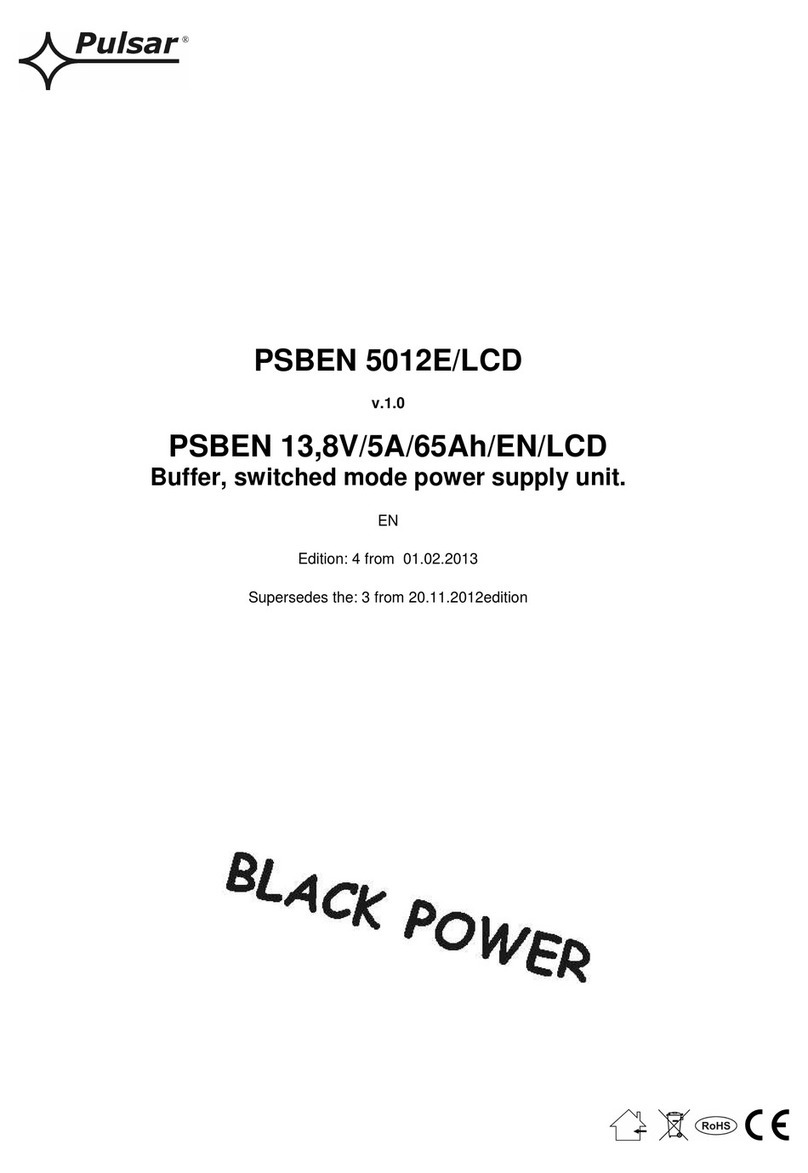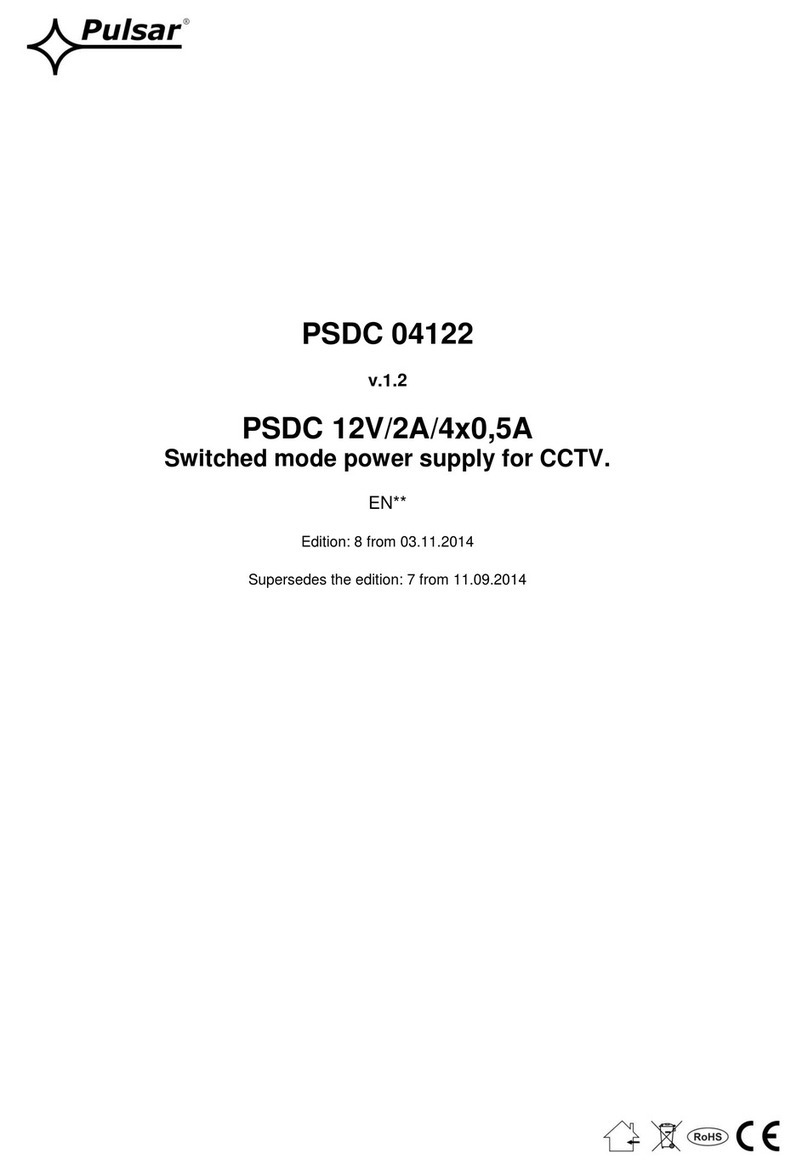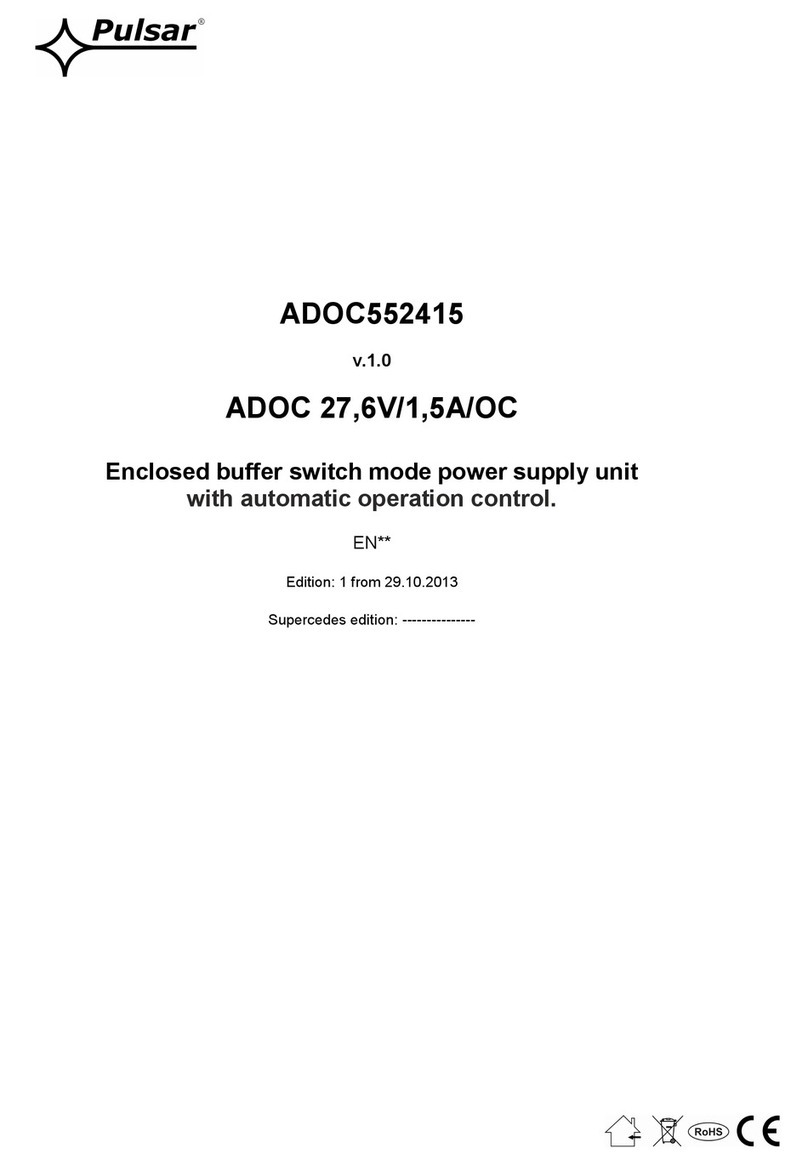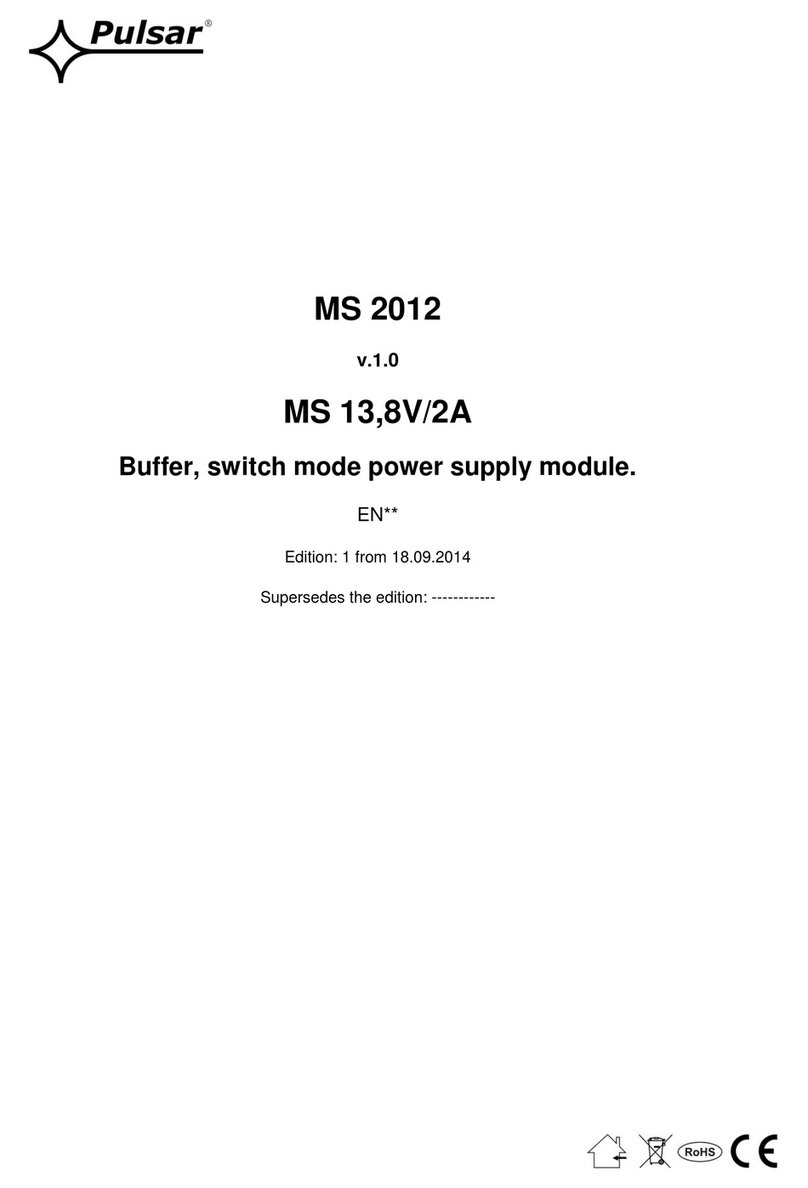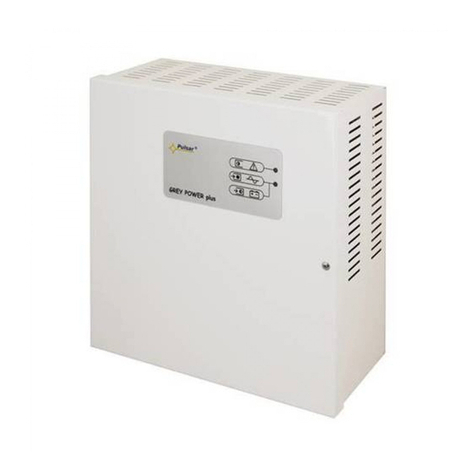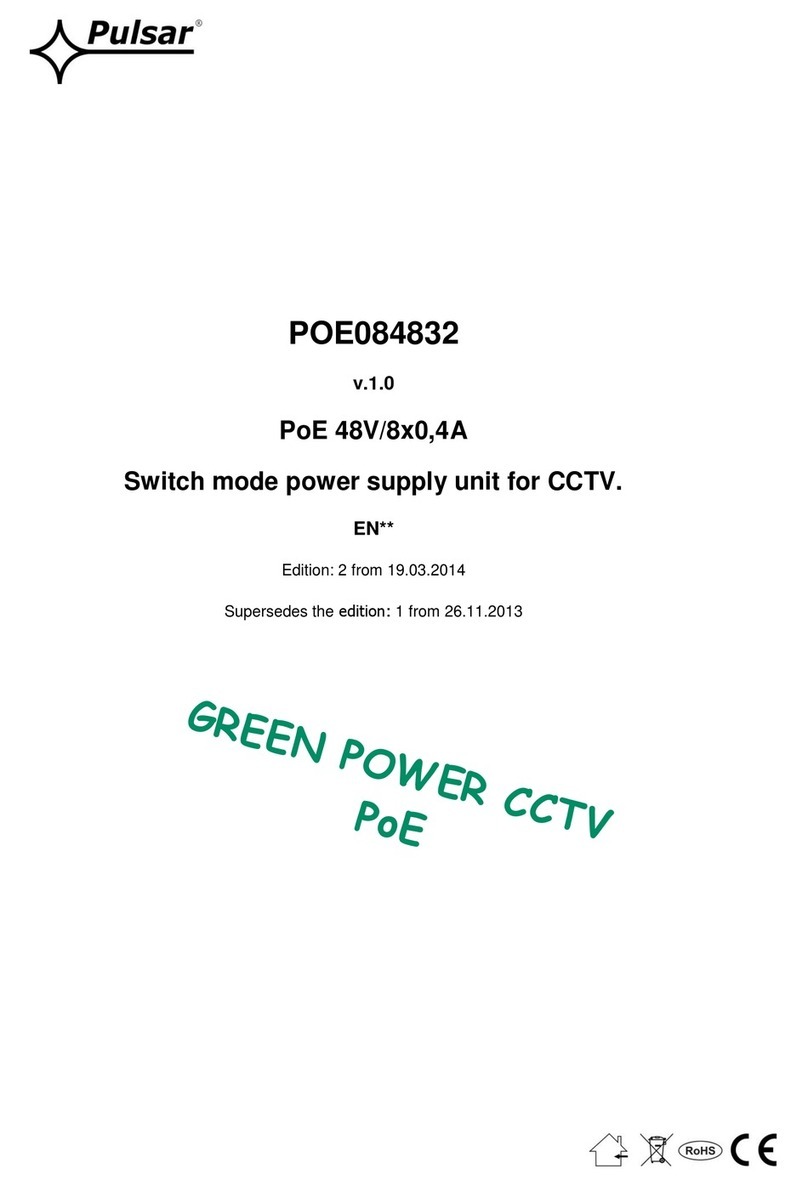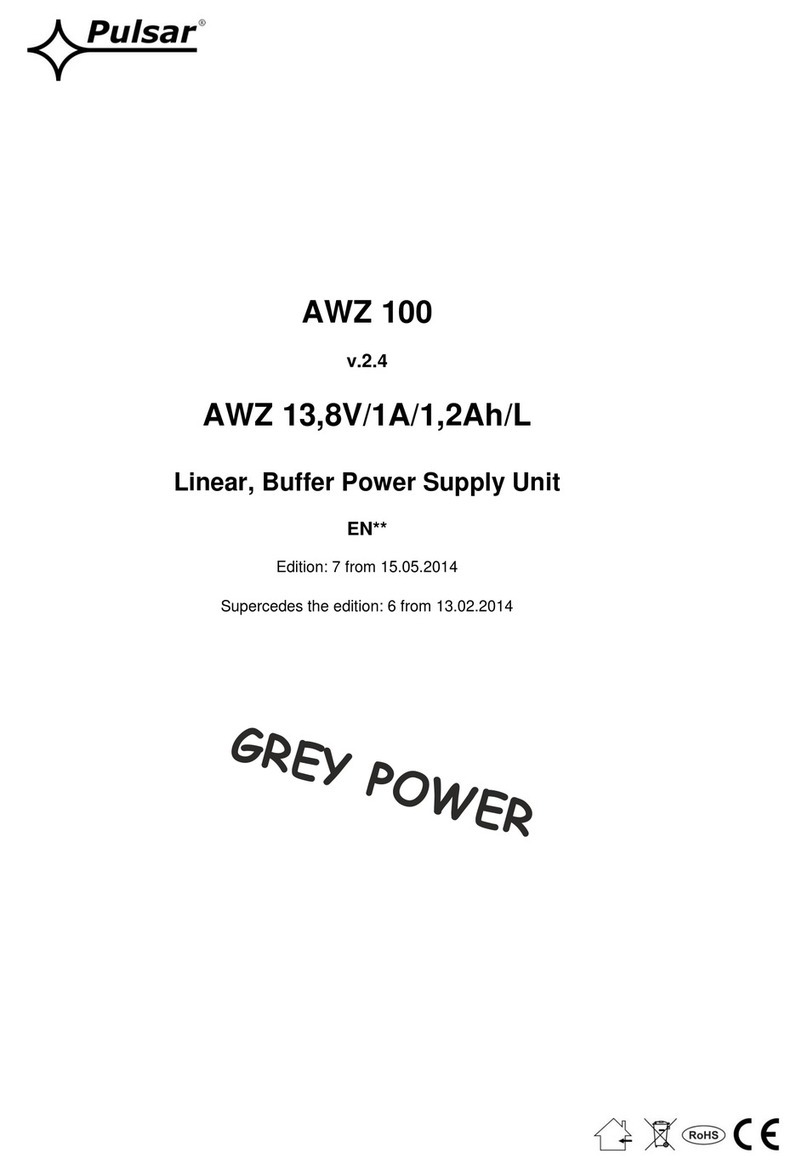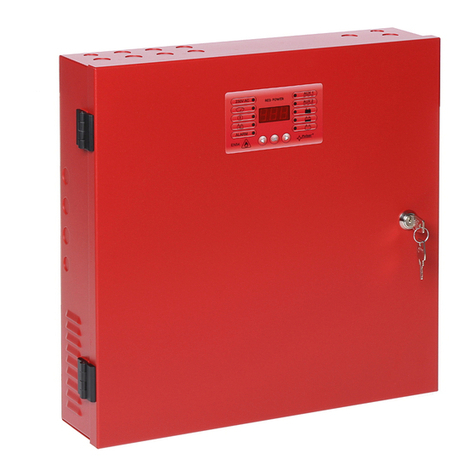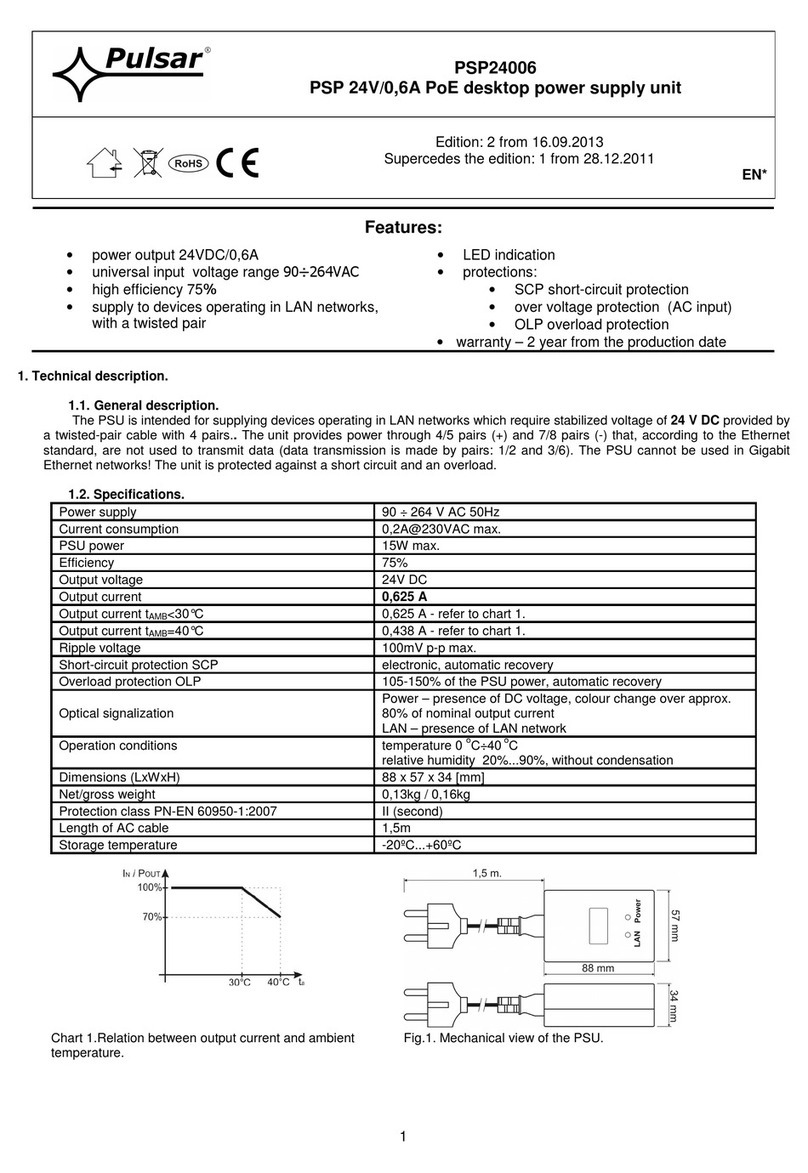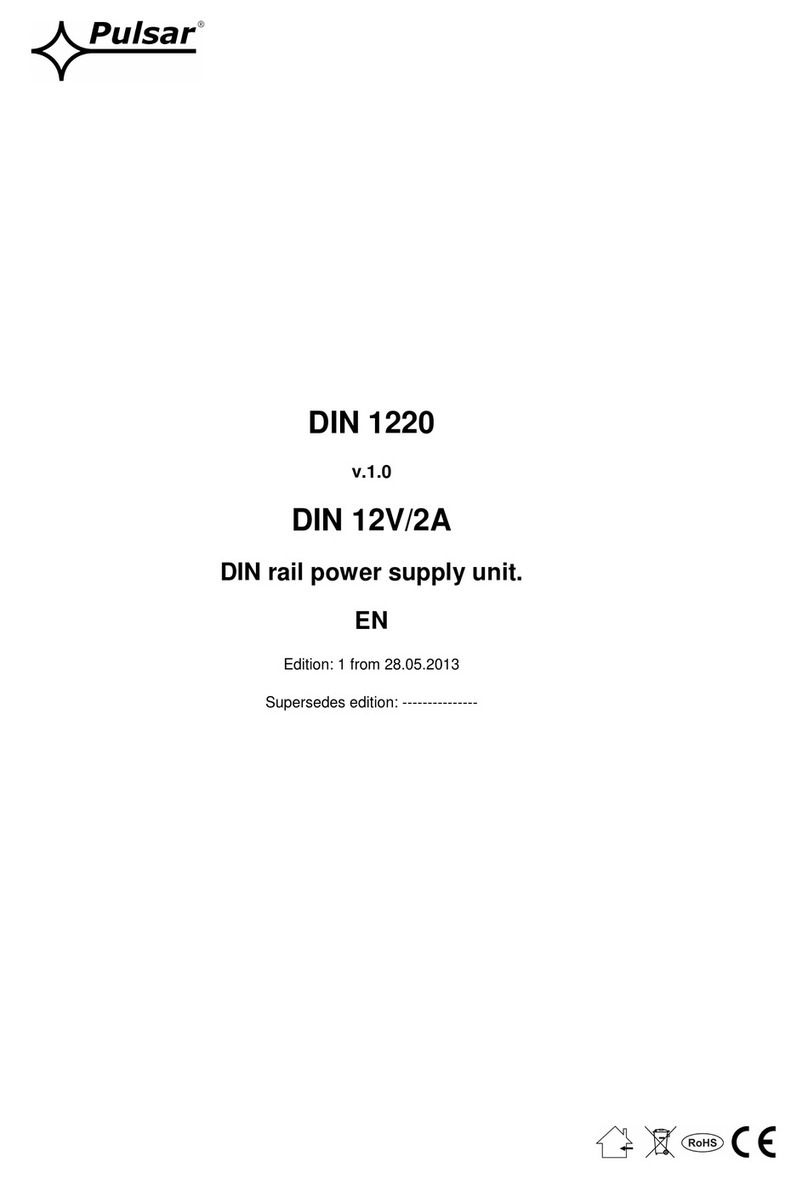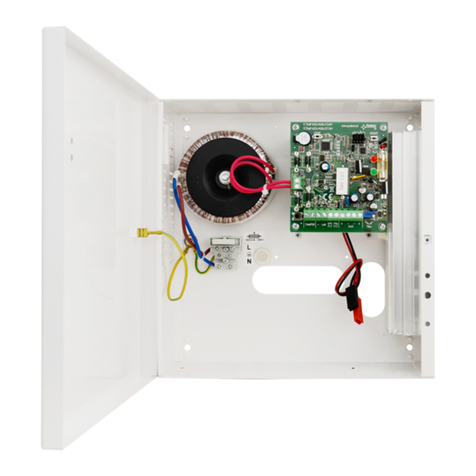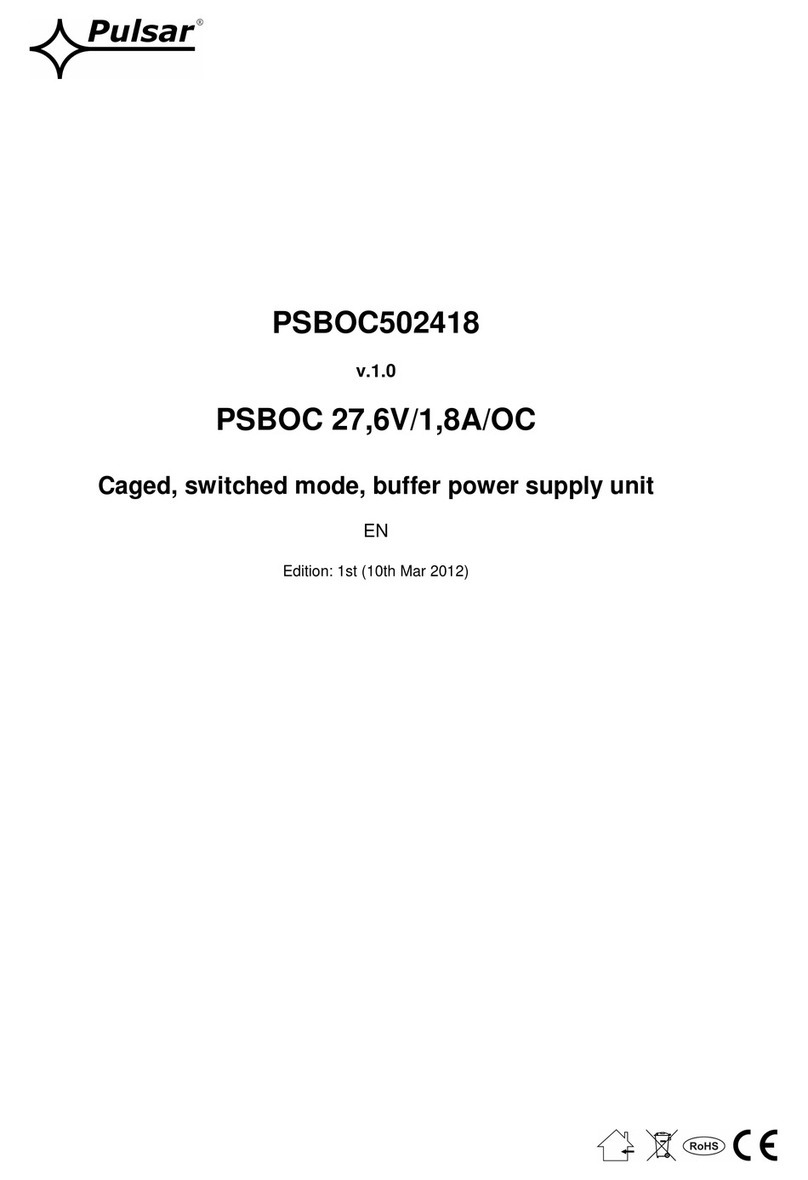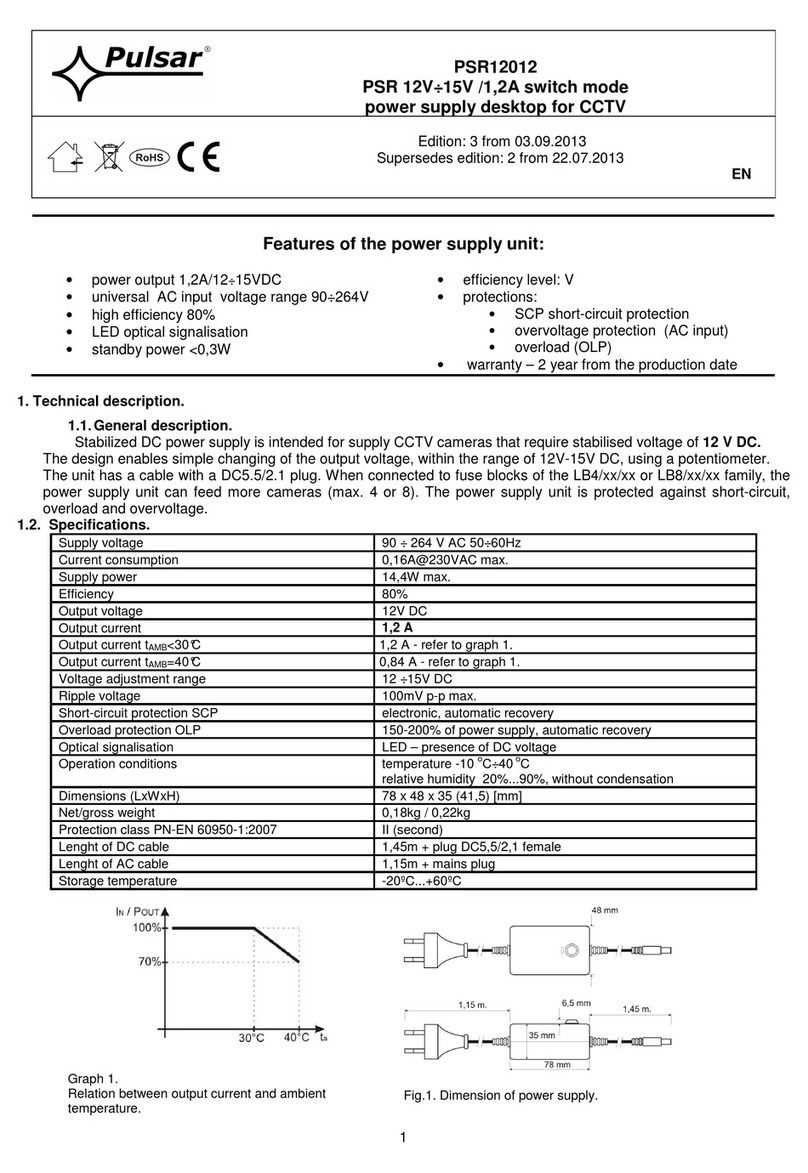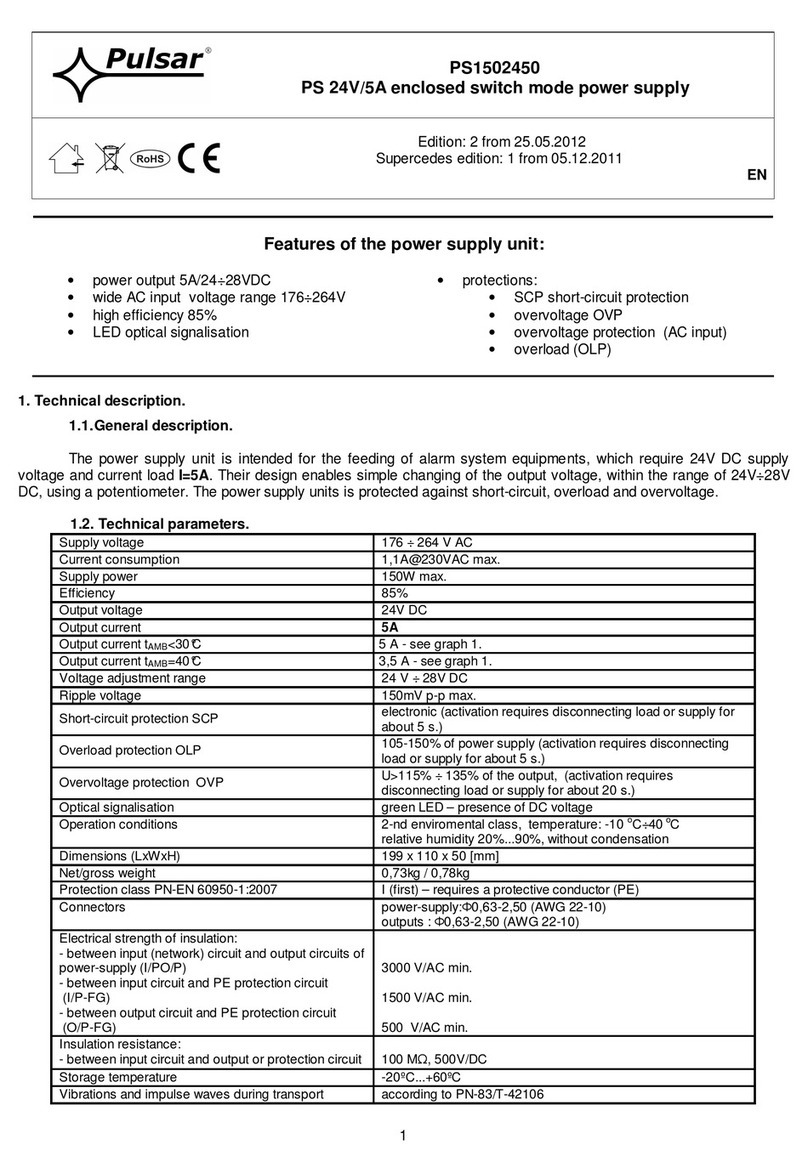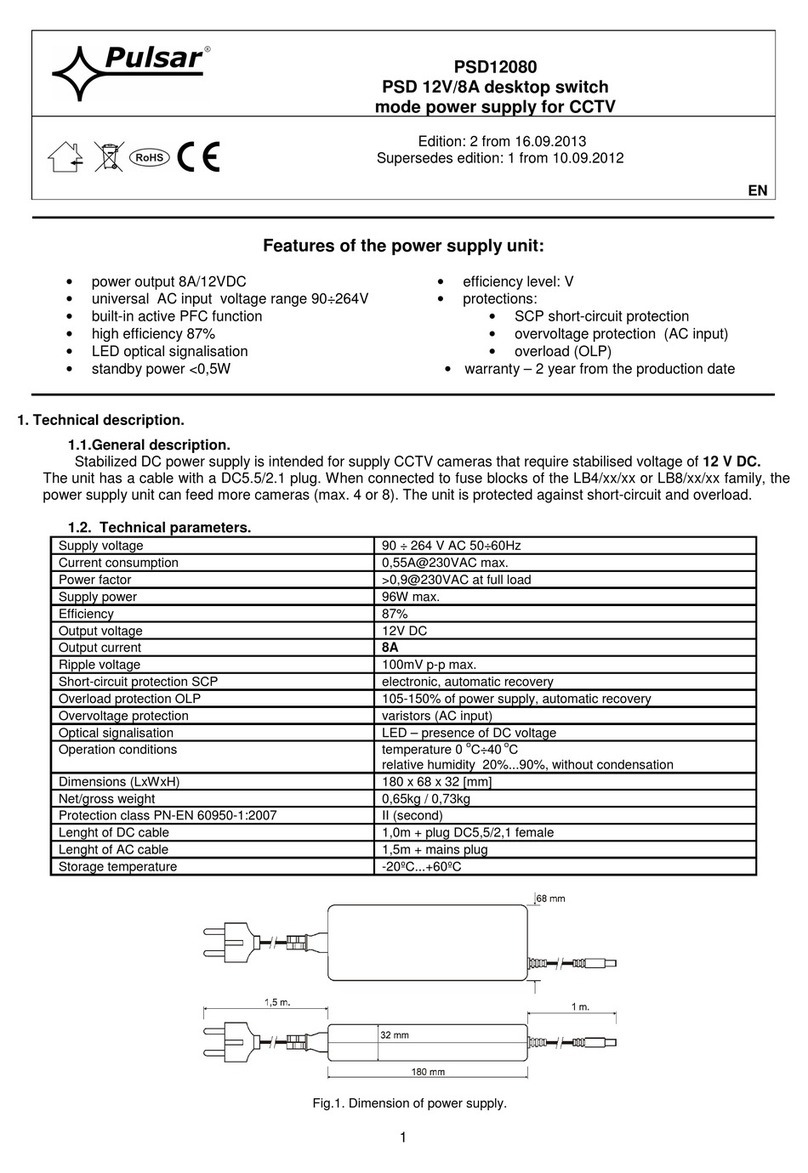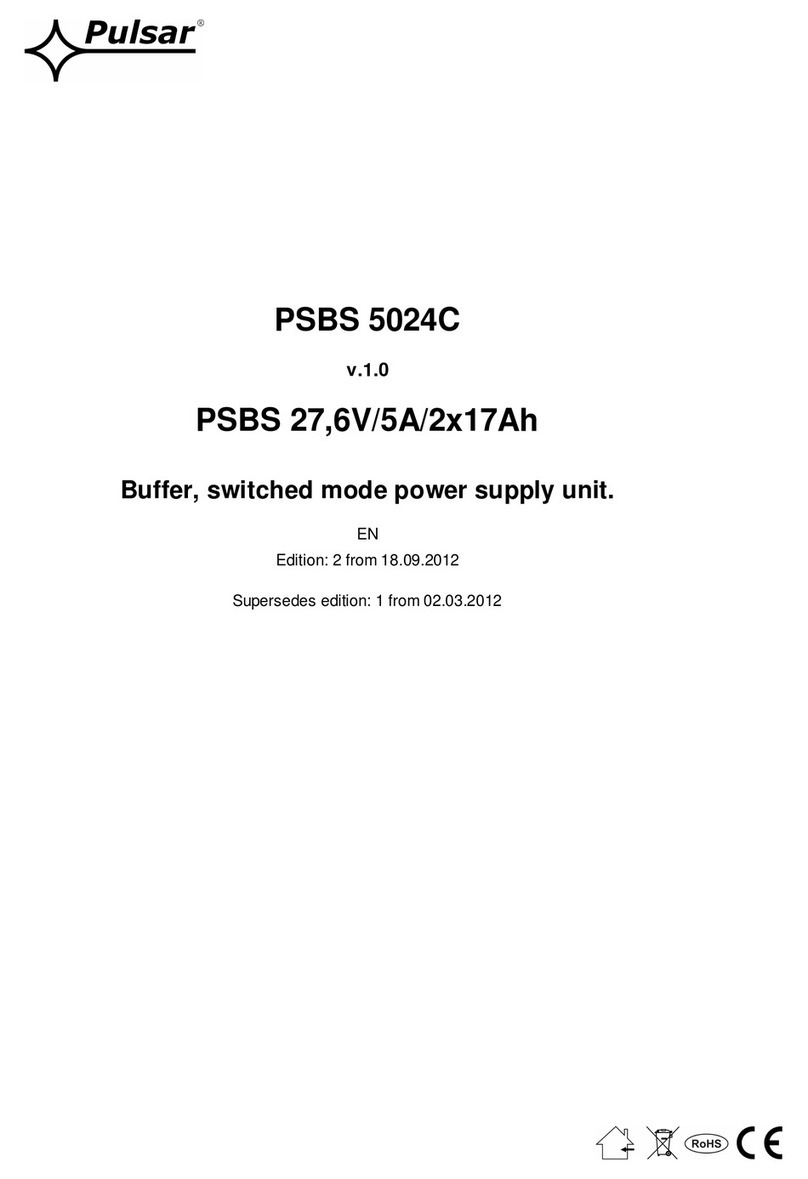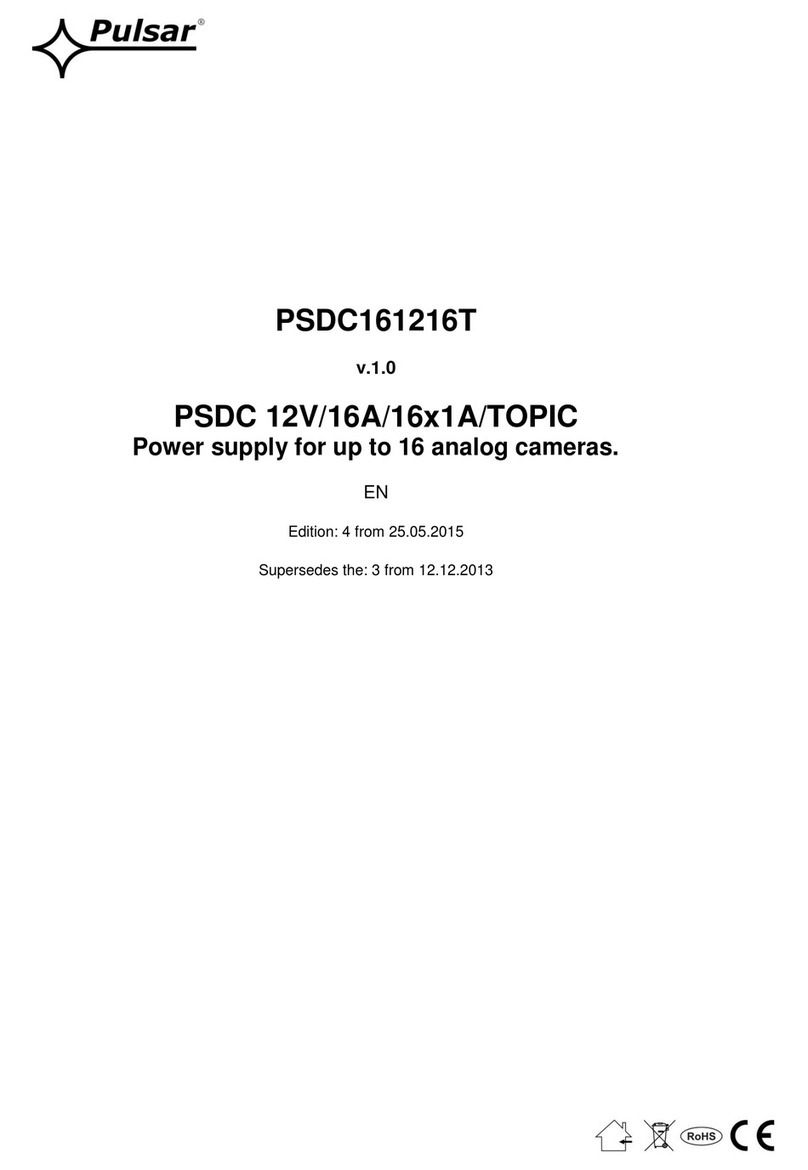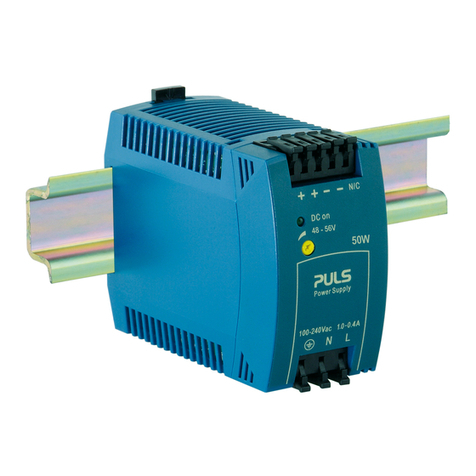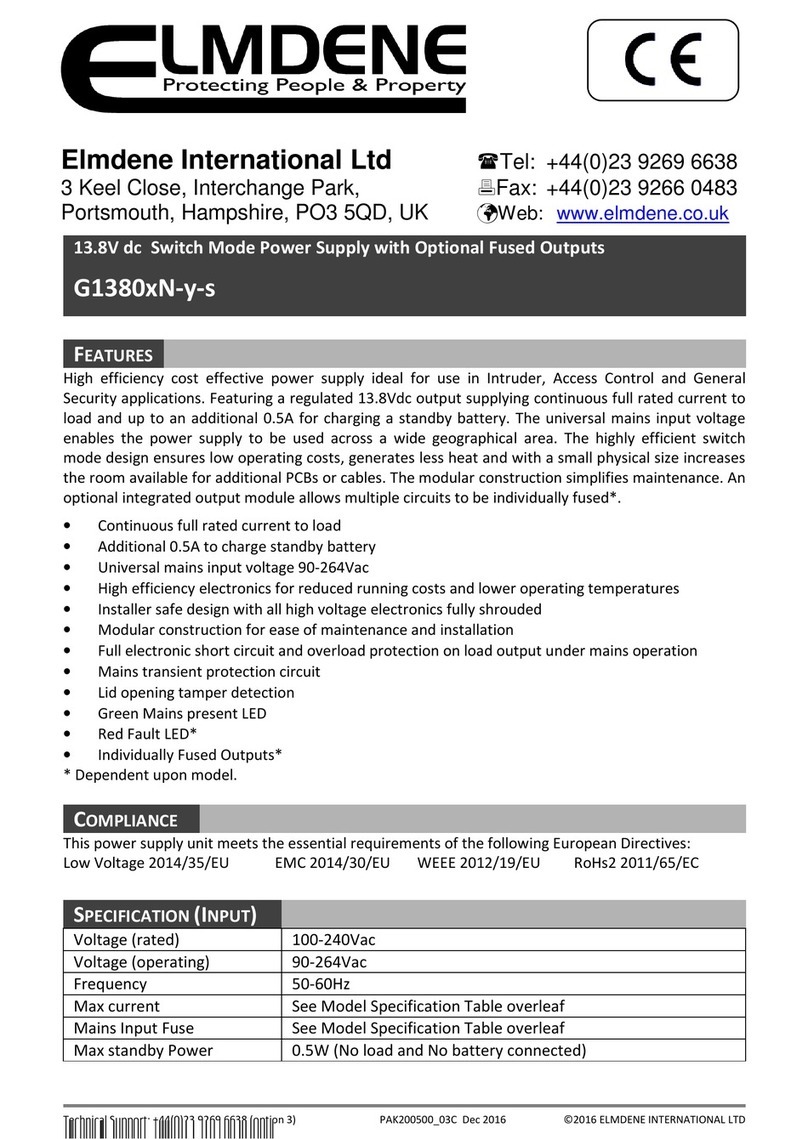
www.pulsar.pl HPSG3
3 Installation.
3.1 Requirements.
Power supply units is to be mounted by a qualified installer, holding relevant permits and licenses (required in
installation country) to connect (interfere) with ~230 V mains supply.
Because power supply units is designed for the continuous operation and is not equipped with ON/OFF switch,
the power supply circuit should have the appropriate overload protection. Moreover, the user shall be informed about
the method of unplugging (most frequently through separating and assigning an appropriate fuse in the fuse-box).
The electrical system shall follow valid standards and regulations. The PSU shall work in a vertical position that
guarantees sufficient convectional air-flow through ventilating holes of the enclosure.
As PSU cyclically runs a periodic battery test, during which resistance in battery circuit is measured, pay
attention to proper connection of cables to terminals. Installation cables should be firmly connected to battery side
terminals and to power supply connector. If necessary, it is possible to permanently disconnect battery from power
supply systems by removing FBAT fuse.
3.2 Installation procedure.
CAUTION!
Before installation, cut off voltage in ~230 V power-supply circuit.
To switch power off, use an external switch, in which distance between contacts
of all poles in disconnection state is not less than 3mm.
It is required to install in the supply circuits, in addition to power supply, circuit breaker with 6 A
nominal current.
1. Mount the PSU in a selected locatio.
Connect power cables ~230 V to L-N clips of PSU. Connect ground wire to clip marked by earth symbol .
Use a three-core cable (with a yellow and green protection wire ) to make connection.
Wires should be deisolated to a length of 7mm.
Shock protection circuit shall be done with a particular care: yellow and green wire coat of
power cable should be connected to terminal marked with grounding symbol on PSU enclosure.
Operation of PSU without properly made and fully operational shock protection circuit is
UNACCEPTABLE! It can cause damage to equipment or an electric shock.
2. Connect receivers’ cables to AUX output terminals.
3. If needed, connect cables from devices to technical inputs and outputs:
- APS; technical output of battery failure
- EPS; technical output indication of 230 V power collapse (alarm control panel, controller, indicator, etc.).
- PSU; technical output of collective failure of PSU
- EXTi; input of external failure
- TAMPER; contacts of antisabotage protection
4. Install battery/batteries in a designated area of enclosure. Connect batteries with PSU paying special attention to
correct polarity and type of connections (Fig. 4):
a) b)
Fig. 4. Connecting batteries depending on voltage version of power supply:
a) ) power supplies 12V version, b) power supplies 24V version
